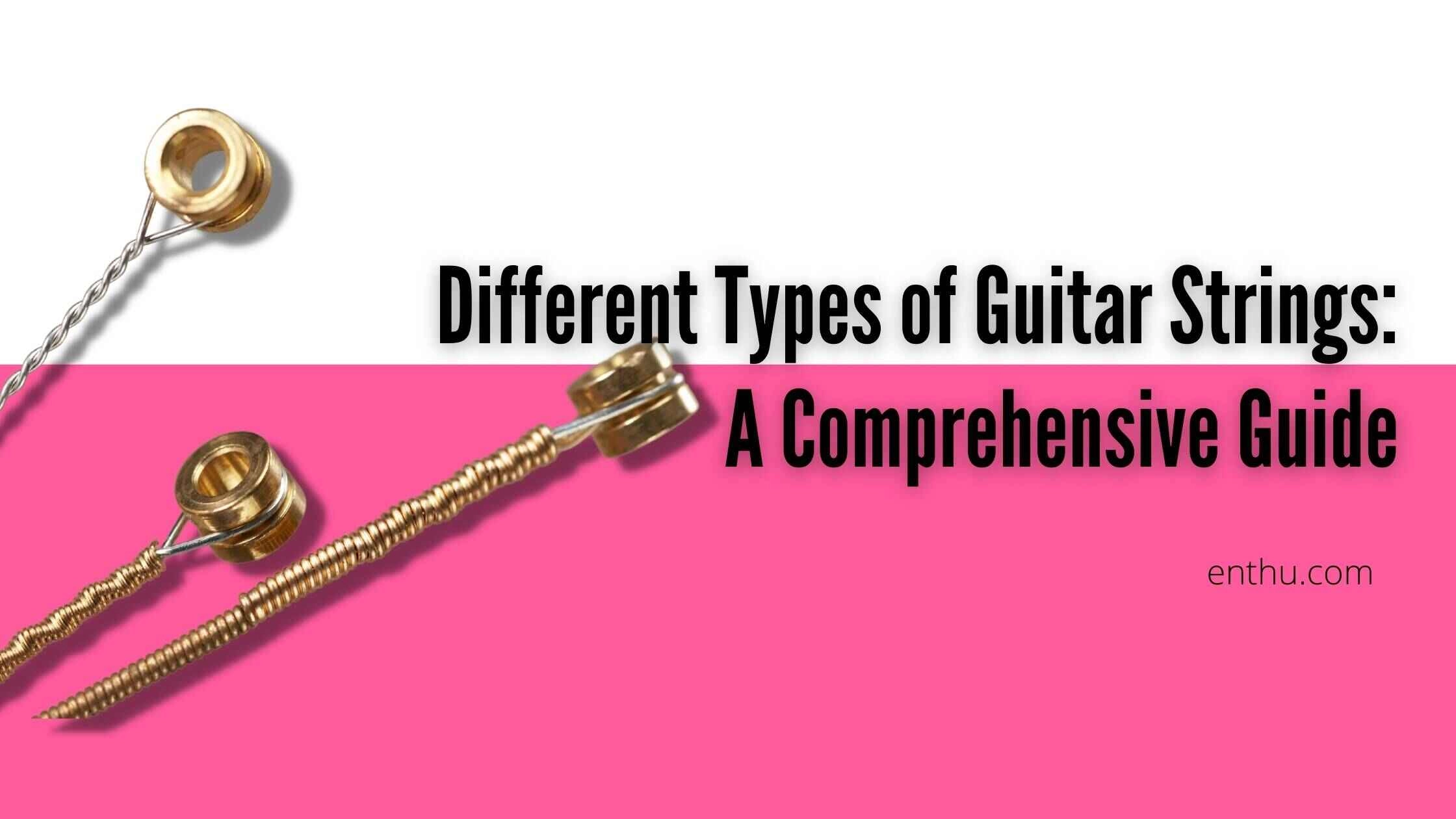The guitar is a beautiful instrument that produces melodies based on the techniques employed. And usually, the player only has to worry about 6 strings; with that, they have enough to play an entire song, but it continues to evolve to this day.
During its era of creation, the guitar had either 4 or 6 strings, but these days you get a variety of combinations, especially with the growing demand for custom instruments.
So let's look at how far the guitar manufacturing industry has gotten with the number of strings on a guitar.
A Brief History
The History of the guitar dates back to 15th century Spain, where an instrument that resembled the guitar was first discovered. While It is hard to track down the instrument makers, it is believed to be developed by the people of Malaga.

The early models they made had 4 strings; this is where the Ukulele came into existence. They had a different shape and size from what we know today. It was deeper, narrower, and had 4 strings.
Until today, the guitar's sound varied on the materials they used to build it. Well, that isn't the case today. Today, a typical guitar has 6 strings tuned to EADGBE. No clear documentation can tell us why people settled on EADGBE, but it is believed that this arrangement was decided on comfort, practicality, and volume.
Until the discovery of synthetic plastics in the 1900s, or steel strings, people used animal products like the intestine. Natural products gave the guitar a more mellow and warm tone, but they were inconsistent and difficult to work with. There are different types of strings that produce different types of sounds. But How much has changed?

What do Modern Strings look like
Today, the guitar strings are tuned the exact same way. The only noticeable difference is the technology and material used to make strings. A classical guitar nowadays uses nylon strings instead of gut strings.

While electric and bass guitars use steel or alloy strings, each designed with a different volume, performance, and tone. In either of these cases, the strings are labeled the same way.
E | A | D | G | B | E |
6 | 5 | 4 | 3 | 2 | 1 |
String 1 is the thinnest and is the high E, while string 6 is the thickest and is the low E. It may seem odd, but string 6 is the closest to you when you hold the guitar. This is the first thing you learn in a guitar course.
The 3 strings on the bass side, E, A, D, i.e., Strings 6, 5, and 4, are called the wound strings. They have a central core wrapped with a metal coil. This allows manufacturers to make strings thicker while retaining strength and flexibility.
How many Strings do Acoustic guitars have
The standard acoustic guitar has 6 strings made with either nylon or steel. But there are some exceptions to this setup.
1. The 12-String guitar
A 12 String guitar is just your typical 6-string guitar with two necks or courses of strings tuned to the octave. This super cool-looking guitar was popularized by Roger McGuinn of the Byrds and Jimmy Page of Led Zeppelin in the 60s and 70s. You can hear them on songs like 'More than a Feeling' or 'Over the hill and far away.'
2. The Harp Guitar
This is a bizarre and unusual contraption. It looks like a cross between a six-string guitar and a six-string harp. It has a standard guitar body with a long curved section protruding from the upper part of the guitar body.
How many Strings do Bass Guitars have
The bass players often take up the responsibility to hold the middle ground between a guitarist and a drummer. Most basses in the market have 4 strings, with a select few exceptions. Let's take a look at the variations of four-string basses.
1. The 5-String Bass
The four-string bass is tuned to E, A, D, G; that's the standard. But, the 5-string bass has a lower B note below the E. Which makes them the perfect candidate for heavier genres where "Tune Dropping" is common.

2. The 6-String Bass
A six-string bass keeps the low B from the 5-string variant but adds a higher C note above the G. They are primarily used in genres with many riffs and tonsil variations or perform solos, think Gospel or Jazz fusion.
3. The 7-String bass
They are an infrequent occurrence in the market; however, they do exist. They are usually tuned to B, E, A, D, G, C, F. You'd think, "Why Would I, or Anyone else for that matter, need a 7-string guitar?" You may be right to think so.
But like most concepts in this world, it was born out of curiosity and because guitar manufacturers constantly stretch their limits. It does sound wild and energetic if you know how to play it properly.
Check out EnthuZiastic Guitar Classes for a personalized Guitar learning experience.
4. The 8-String bass
The 8-string bass might sound intimidating, but it is just 4-string bass with two courses of strings. Instruments like the 12-string guitar are tuned to octaves to produce a thicker tone and cover a more comprehensive frequency range.
In the same way, an eight-string bass is tuned to give you a more significant tone and frequency range overall.
5. The 9-String Bass Needless
To say, we are entering absurd territory since the neck of the guitar will only get more complicated with the addition of each string. Basses have a thicker neck than a standard acoustic guitar, so just imagine how wide this would be.
The craftmanship must be terrific if it has to handle the pressure of 9-strings. But with this kind of arrangement, you get access to some crazy highs and lows.
6. The 12-String bass
The 12-string bass is unusual as it is just a four-string bass with three-course strings. Each note you play will give you a huge sound.

How many Strings do the Electric Guitars have?
Most electric guitars have six strings. Most of your favorite lead guitarists use this basic electric guitar version. Now, let us explore some unique variations here.
1. The 7-String Electric
A seven-string electric guitar has an extra low B below the low E. They are great for heavier genres and even when you need low bass notes in a composition.
2. The 8-String Electric
To most guitarists, this may seem excessive, but for modern electric virtuoso Tosin Abasi, it appears to be a perfect match. The eight-string guitar is tuned to #F, B, E, A, D, G, B, E.
3. The 9-String Electric
Nine-string electric guitar adds another low note below F # - The C#. So, you have a hybrid instrument between guitar and bass.
4. The 12-String Electric
We have already talked about 12-string guitars; they don't work differently from the 12-string bass or the 12-string acoustic. It is a six-string guitar with two-course strings tuned in octaves.
The perfect example who uses this type of guitar is Jimmy page, he used it in his live performance of Stairway to Heaven. His guitar has two necks; the first string has 12-strings, and the second has 6-strings.


Conclusion
We have looked at so many kinds, but that list is not complete. But in all honesty, I feel there should be a logical and practical limit to how many strings a guitar can have. After a certain point, it doesn't make any sense to have 12 or 18 or 20 strings on a guitar. Plus, learning to play an instrument with 6 strings is challenging enough, so imagine the time it would take for you to learn something with 20 strings.
But you get the general idea that there are a lot of different types of guitars. It is difficult for even a seasoned musician to master the 12-string or 18-strings, but they are ridiculously fun to play, which is what matters the most. So have fun and play like a rockstar.
FAQs
1. How many strings does a basic guitar have?
A standard guitar has 6 strings. Each string has a different thickness, which in turn produces different tones.
2. Which type of strings should I use for the best tone and durability?
In this day and age, the stainless strings have a crisp, bright, and edgy tone with a good sustain and corrosion resistance.
3. Does it matter what strings I use on my guitar, or do they all sound the same?
No, each type of guitar has a particular kind of string that suits it best. There are varieties within each type of string, but classical guitar strings, steel-strung acoustic guitar strings, and electric guitar strings are not interchangeable.


Comments